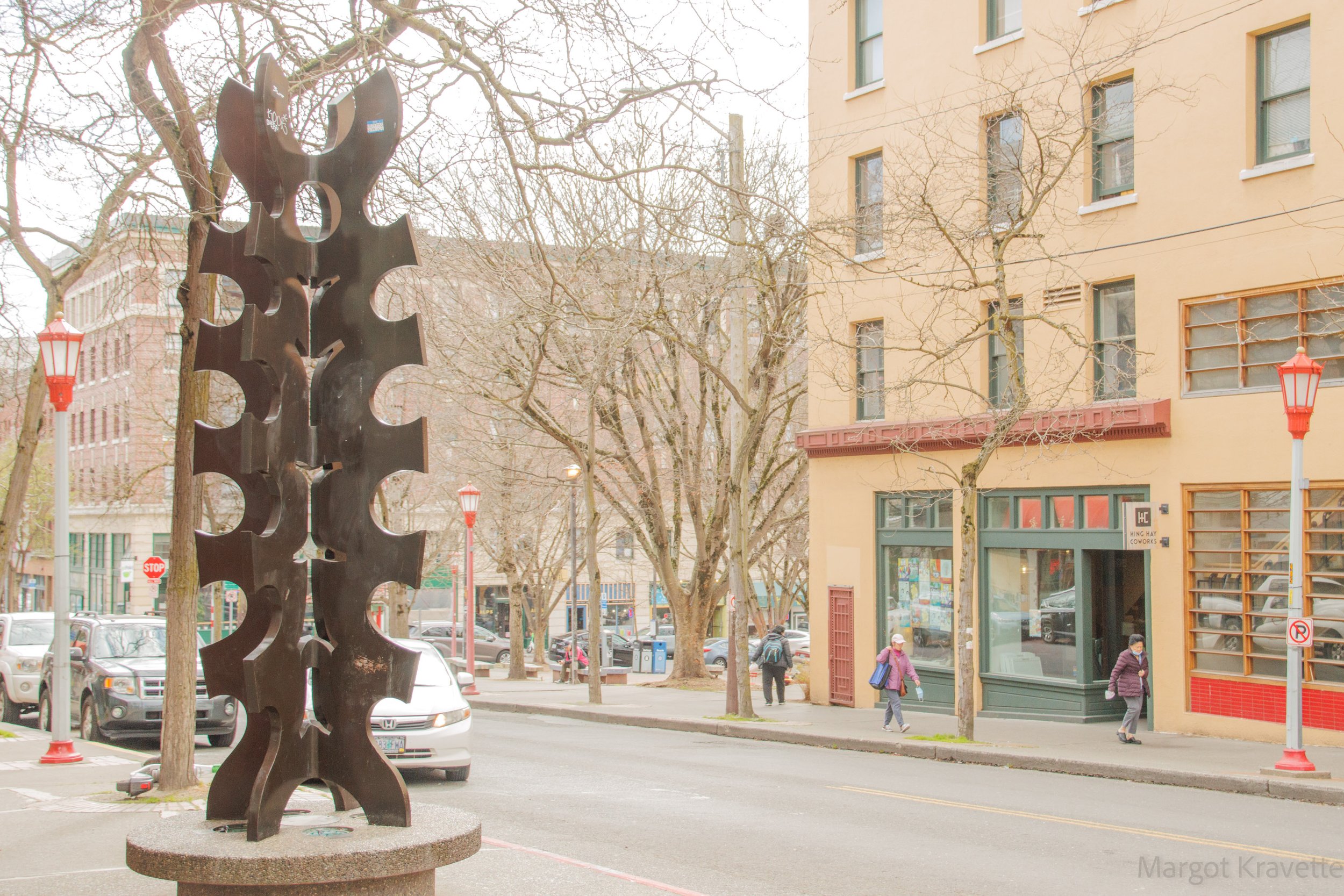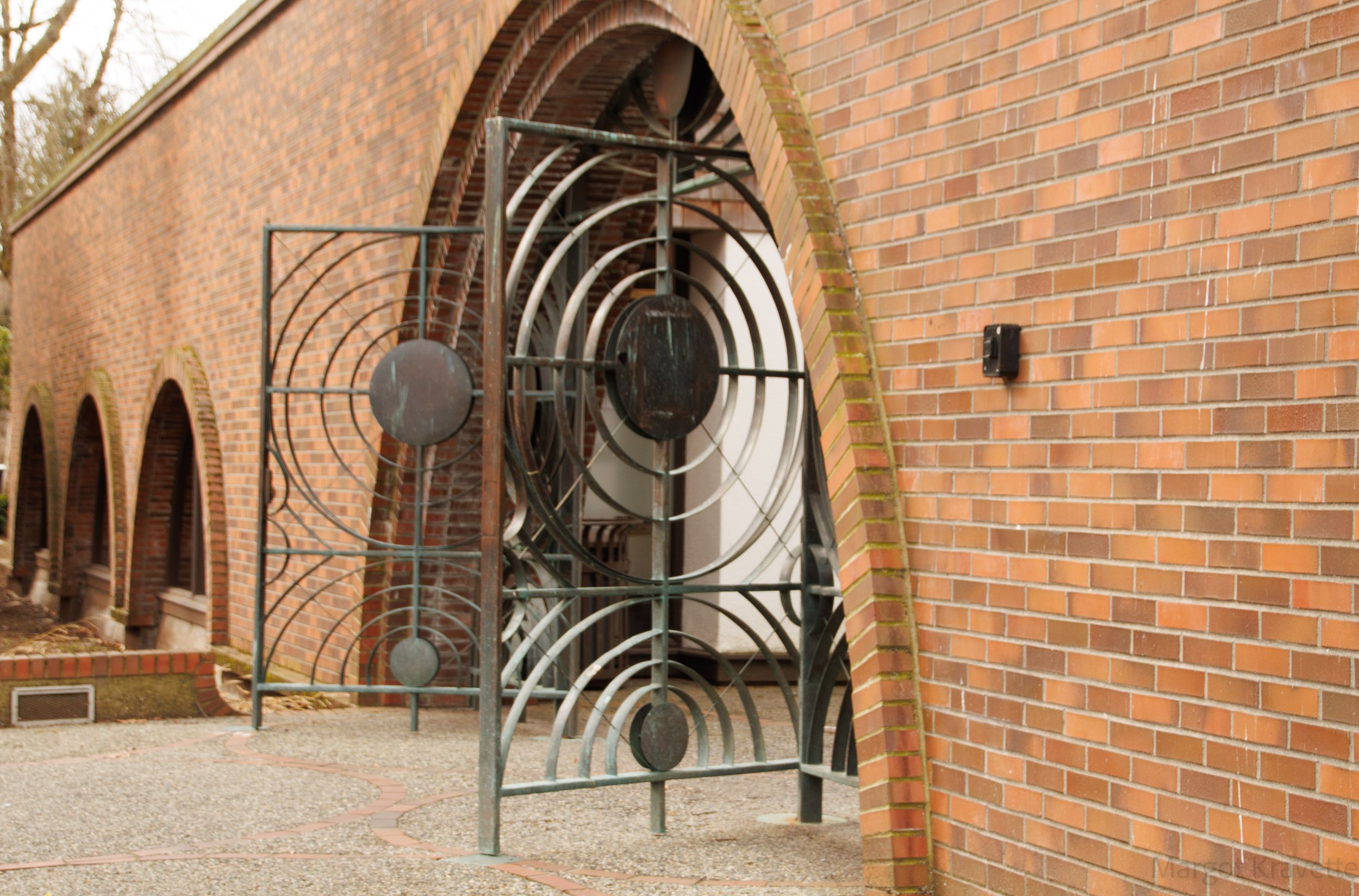George Tsutakawa’s Fountains
“Fountain Group” - Northwest Hospital (1962)
I recently read the transcript of a fascinating oral history interview of George Tsutakawa by Martha Kingsbury, done in September, 1983 for the Smithsonian’s Archives of American Art. As I read page after page, I could almost hear Tsutakawa’s responses, providing context for questions Kingsbury asked and supplementing other relevant detail that added life to the interview. Soon after, I spent a full day exploring many of Tsutakawa’s fountains that adorn Seattle’s landmarks.
“Fountain” - Group Health - Now Kaiser (1970)
The fourth of nine children, George Tsutakawa was born in Seattle on George Washington’s birthday, February 22, 1910, and was named after our first president. His early years were spent on Capitol Hill where his family had a house on Federal Avenue E. He went to Lowell School through second grade, then was sent to Japan with his older brother to live with his grandmother. Having spent his first seven years in the United States, George was not fluent in Japanese. His lack of skill with the language made it difficult for him to excel in his schoolwork as well as to make friends. He did, however, adopt the disciplined work habits that Japanese schools provided.
“Fountain of Reflection” - University of Washington Mackenzie Hall - now Founders Hall (1972)
George’s grandmother was the first to introduce George and his brother to the arts. He attended the theater and studied philosophy, pottery making and tea making. His grandfather also exposed George to flower arranging and calligraphy, with George learning by watching his grandfather. George was much more interested in drawing than he was in academics and made it clear to his father that this is what he wanted to do in his adult life. His father had wanted George to follow in his footsteps and work in the family import-export business, and was unhappy with George’s choices. His father sent George back to Seattle to finish school, hoping that George would find an interest in the family business there. Tsutakawa completed high school in Seattle and got a Fine Arts degree from the University of Washington with a major in sculpture in 1937 at age 27.
“Fountain” - Seattle Central College (1973)
When World War II broke out, as a native-born U.S. citizen, Tsutakawa was drafted into the army, while many of his family members were sent to detention camps in Idaho and California. While at his first assignment at Camp Robinson in Arkansas, officers there learned he was an artist and assigned him to paint officers’ portraits and create murals. Later he taught the Japanese language to officers in the Military Intelligence School. On a visit to family at one of the camps he met Ayame Iwasa, who would become his wife.
Since the US government had closed the family business, Tsutakawa was free to pursue his passion for art, and he enrolled at the University of Washington graduate program in art under the G.I. Bill. At the same time he was teaching Japanese in the UW Far East Department, and was a part-time instructor at the School of Architecture. Early in his career he used oil paints to explore abstract expressionist themes. Later, and throughout his life, he used sumi paint to depict nature and the sea.
“Safeco Fountain” - UW Tower (1973)
“Naramore Fountain” - Freeway Park (1966)
Tsutakawa’s work was gradually growing in popularity and his exhibits were expanding, not only in Seattle but globally. His first commission was to carve walnut door panels for the Canlis Restaurant in 1956, and the doors are still up today. He was later introduced to a book by Supreme Court Justice William O. Douglas where he learned how Himalayan travelers added a stone to other piles of stones left by earlier travelers to celebrate successful crossings of a mountain pass. These piles of stones, called obos, became a frequent and popular theme within his sculptures.
In 1958 the Seattle Public Library Board of Directors invited Tsutakawa to create a fountain for the new library under construction downtown between 4th and 5th avenues. The first of 74 fountains that followed and located throughout the United States, Canada, and Japan, the Fountain of Wisdom was dedicated on March 1, 1960. Tsutakawa commented about his fountains “My fountain sculptures are an attempt to unify water; the life force of the universe that flows in an elusive cyclical course throughout eternity.”
“Fountain of Wisdom” - Seattle Public Library Central (1960)
“Centennial Fountain” - Seattle University (1989)
George received many honors throughout his lifetime including the Order of the Rising Sun Award presented to him in 1981 by the Emperor of Japan, and an achievement award from the Japanese American Citizen’s League. He also received honorary doctorates from Whitman College and Seattle University. Tsatakawa died at age 87 in 1997 following a heart attack.
The last Tsutakawa fountain I saw was inside the Wine Bar of the Seattle Sheraton Hotel., where I rested my feet and enjoyed a glass of wine. From Lake City to the International District, and many places in between, I found George Tsutakawa at libraries, colleges, hospitals, on street corners and many places in between. And leaving many more for future visits.
“Fountain” - Seattle Sheraton Hotel Wine Bar
Other Tsutakawa Sculptures seen in Seattle












